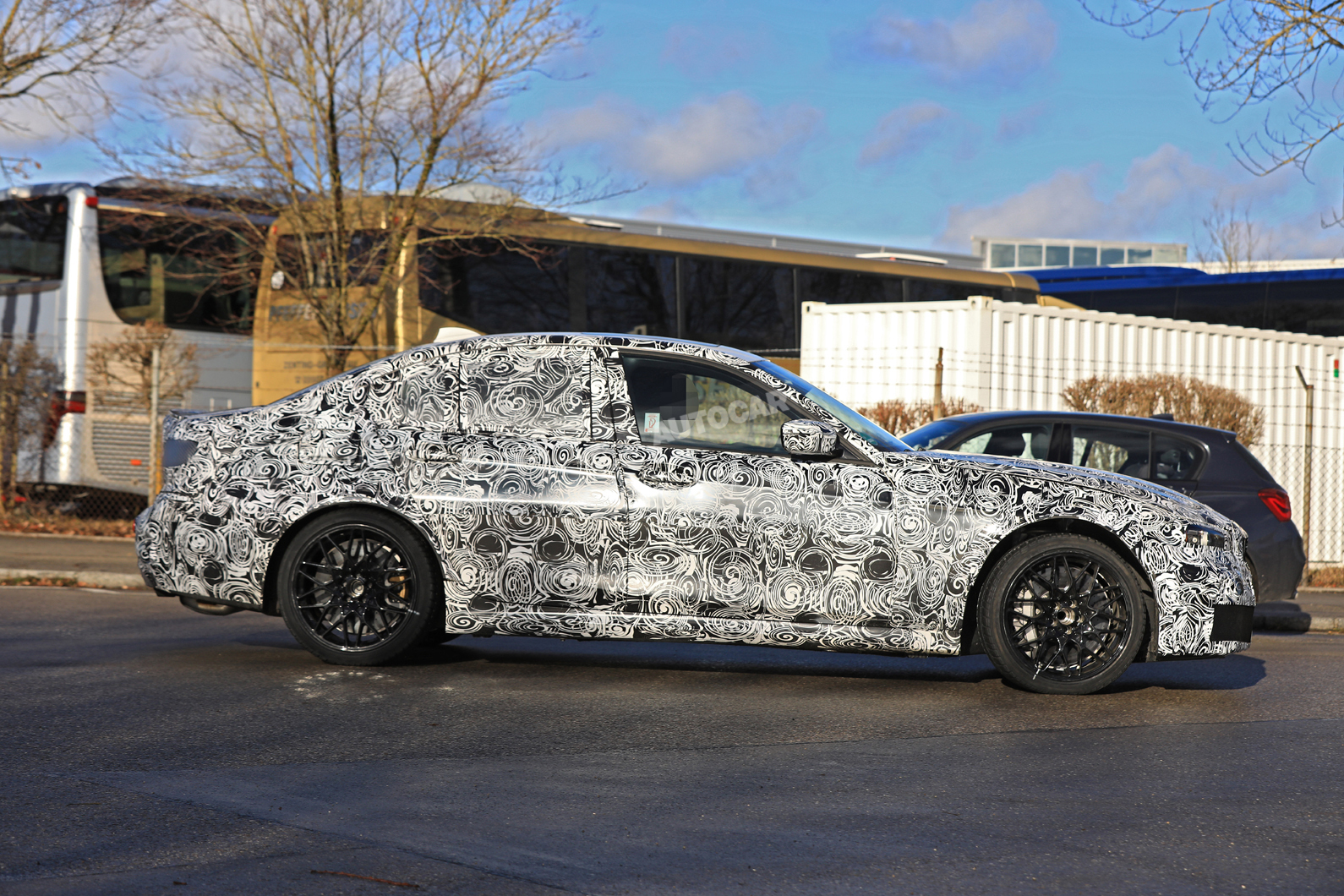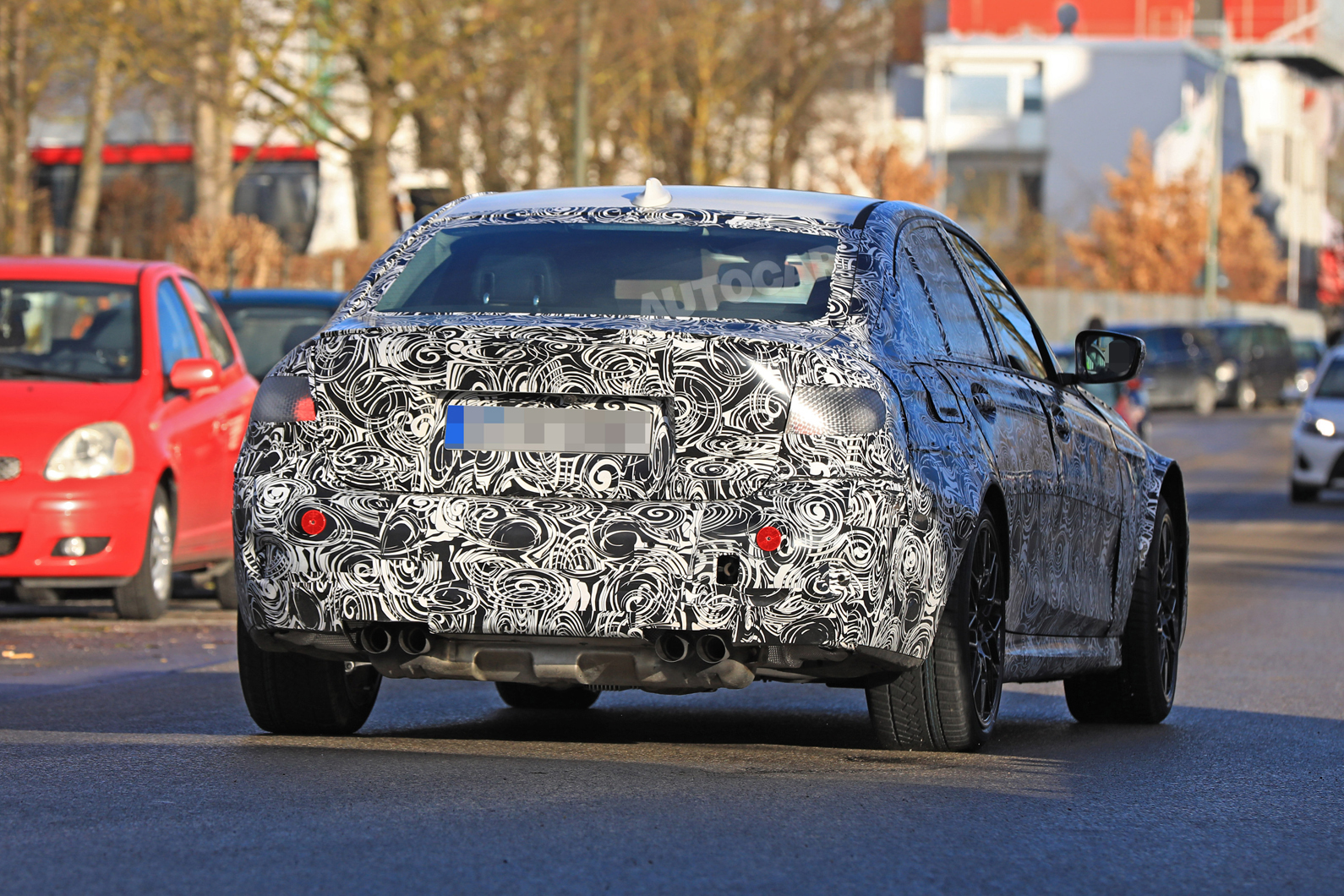Next-generation rival to Mercedes-AMG C63 will be more powerful and lighter than F80
BMW has moved development of its next-generation M3 onto the public road, where the super-saloon has been caught on camera for the first time ahead of its 2019 reveal.
Due to go on sale in early 2020, just under a year after the next-generation 3 Series arrives, the Mercedes-AMG C63 rival will be built on BMW's latest CLAR structure, using more aluminium and high-strength steel to save weight and improve chassis rigidity.
CLAR already underpins the 5 Series and 7 Series, as well as M division models, and in the M3 it will be accompanied by extra carbonfibre parts, the largest of which will be an all-carbon roof. BMW has ruled out using a Carbon Core, like the one on the 7 Series, in the next 3 Series models due to the complexity of the production process and significantly higher demand for the smaller saloon. But the new car is still pipped to weigh less than the recently revealed 1585kg M3 CS.
The use of more exotic materials will enable the weight loss despite a small growth in size for the M3, with an expected 20mm growth in wheelbase and 60mm expansion in total length. It is understood that BMW is not interested in offering a part-time all-wheel-drive system like the one used on the new M5 largely due to the weight penalty it would bring. The same explanation is provided for a lack of four-wheel steering hardware.

Power sent rearwards will come from an extensively updated version of BMW's twin-scroll turbocharged 3.0-litre straight-six engine. The CS, the run-out version of the current F80 M3, produces 454bhp, but a figure of 465bhp is predicted for the standard version of the next M3. While not confirmed, part of the performance increase could come from the use of a water injection system like the one employed by the M4 GTS, enabling reduced cylinder temperatures for more efficient running. This suggestion is backed by comments from Bosch, the company that developed the system. It revealed to Autocar that the technology would be featured on more models from 2019; however, packaging challenges brought by the requirement for a water tank may prevent its use.
Comments from company vice-president Dirk Hacker revealed that BMW is investigating using electrification, likely in the form of gearbox-mounted electric motors, in M models to boost torque and reduce emissions. But insiders have told Autocar that the M3 will retain a pure combustion engine system in a bid to save weight and prevent costs from spiralling. The car's petrol-fuelled powerplant will therefore be the only source of drive through a standard-fit six-speed manual gearbox or optional eight-speed automatic. The automatic will enable the best performance figures, thanks to an electronic launch control system.
Our first sighting of a test car for the BMW M3 gives away little as to how the car will look, with the test lights fitted to the car not representative of the LED lights due for the production model. The only giveaways that this is an M3 test car are the large brake rotors and quad-tip exhaust system. The overall shape is familiar and suggests that the 2020 M3 will evolve the look of the current car in a similar vein to the latest 5 Series and M5 models compared with their predecessors (see the gallery above for an Autocar rendering of what the car might look like). There will also be big improvements to aerodynamic efficiency, with the final design heavily influenced by research in BMW's Munich wind tunnel.
Along with the reduced wind noise that this more slippery shape will enable, the car's stiffer CLAR underpinnings will reduce the amount of vibration transmitted through the chassis and into the car to enhance overall refinement. BMW is also expected to dial back the spring rates of the regular 3 Series models in order to make each model more supple over bumps - a response to the more comfortable set-up used by Mercedes-Benz C-Class. The more rigid BMW structure may also allow M division engineers to give the M3 a more compliant ride in its most comfortable mode without hampering the car's overall dynamic ability, making it a better all-rounder and potentially more forgiving in low-grip scenarios.

Inside, the next M3 will follow the new M5's footsteps and swap its dashtop infotainment screen for one that's more tidily integrated into the dashboard. The iDrive system is expected to retain a rotary control knob because it has been praised for its ease of use in current cars. The M3 will also gain significantly more advanced driver assist features, but company sales and marketing boss Ian Robertson has recently hinted to Autocar that most BMW models will steer clear of the full autonomous hardware suites to be used on i5 and i7 due from 2021. M models, in particular, will still possess a very driver-centric character.
Beneath the M3, the most significant M model in terms of sales, BMW's best engineers will also be called on to work on a range of M division-fettled cars. These will include a rear-wheel-drive M340i M Performance model that will feature a 360bhp version of BMW's inline six-cylinder engine. There will also be a four-wheel-drive M340d xDrive M Performance car, which will be equipped with a 320bhp version of the company's twin-turbocharged 3.0-litre inline six-cylinder diesel engine.
The M3 will continue to form the basis for the technically identical M4 coupé and the aforementioned M-worked 3 Series models will lend their hardware to a two-door M440i M Performance coupé and M440d M Performance coupé. These models are also due to arrive in showrooms in 2020 and are part of a 26-model onslaught of M division-tuned cars that aims to more extensively rival the growing ranges of Mercedes-AMG and Audi Sport.
More content:
Will BMW's expansion affect its key cars?
What's coming when from BMW M?